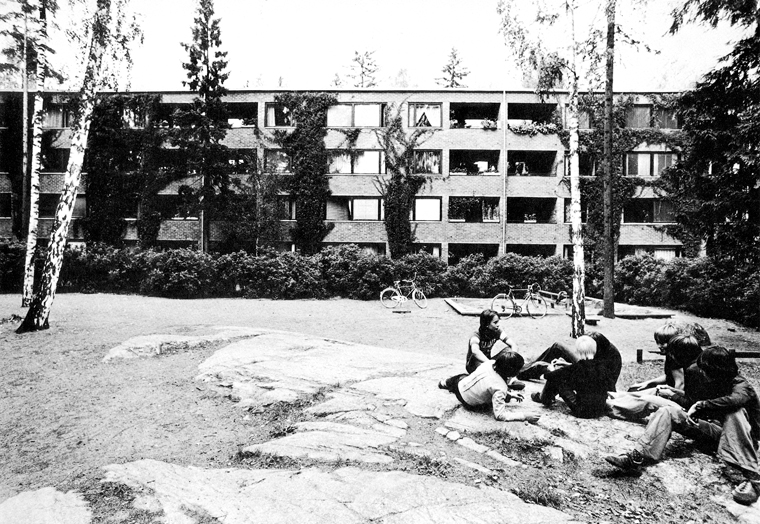In 1922 Lewis Mumford proposed the term “utopias of reconstruction”, in reference to the dreams and wishes of a better world that assumes reality as starting point and looks to transform it collectively; on the other hand, “utopias of escape” would be those that offer an imaginary dream as individual substitute of an impermissible reality. According to Mumford, the relevance of the first relies in his capacity to formulate synthesis that oppose to the fragments reuniting polarities in conflict such as the objective and subjective or the individual and collective. Mumford’s humanist thought, that as a whole can be defined “utopia of reconstruction” unifying the ideal and real, influenced the northern countries in a decisive way its development of organic architecture and regional planning. Specially in Finland, a young nation which, during the middle years of the twentieth century faced the challenge of the physic, economic and social reconstruction after the devastation of the Second World War. In this context Tapiola, as a new plan city built between the 50’s and 70’s of the past century, it represented the mature fruit of this remarkable collective struggle and brings the uniqueness of being conceived as an architecture and urbanism laboratory, where could be experimented extrapolable solutions to other urban interventions.
The present doctoral thesis, a research on the concept “utopias of reconstruction”, compiles twelve chapters written between 2005 and 2015 in which the study of the most remarkable synthesis formulated in the framework of the construction and planning of Tapiola. These chapters are arranged attending to two phases with which Mumford describes the back and forth journey that throughout history connects thought and action. The first phase of “materialization” is the path from the emerge of the first formative ideas until they give rise to a new reality; while the second phase of “etherealization” starts from the disappointment that this situation arises, to return to the symbolic origin of ideas. Finally, a concluding epilogue approaches a transversal reading of the studied “utopias of reconstruction”.
The aim of this research is to go deeply into Mumford’s concept “utopias of reconstruction”, by means of the review of a certain case inspired in his thought. Although the low density city model in which Tapiola is based is not a reference today, social, cultural, environmental foundations are. In fact, the study of this singular urban experience allows us to regain a holistic view of the territory, city and architecture, whose claim is necessary to confront the recent disciplinary specialization and its consequential fragmentation of the lived space. Finally with the rereading of Tapiola through the concept “utopias of reconstruction”, we can recall Mumford’s voice that during the middle years of the twentieth century drew attention to the importance of not forgetting dreams and focus them into the transformation of a reality focused in humans and directed towards the common good.
Key words:
Utopia, reconstruction, transformation, Mumford, Tapiola.





